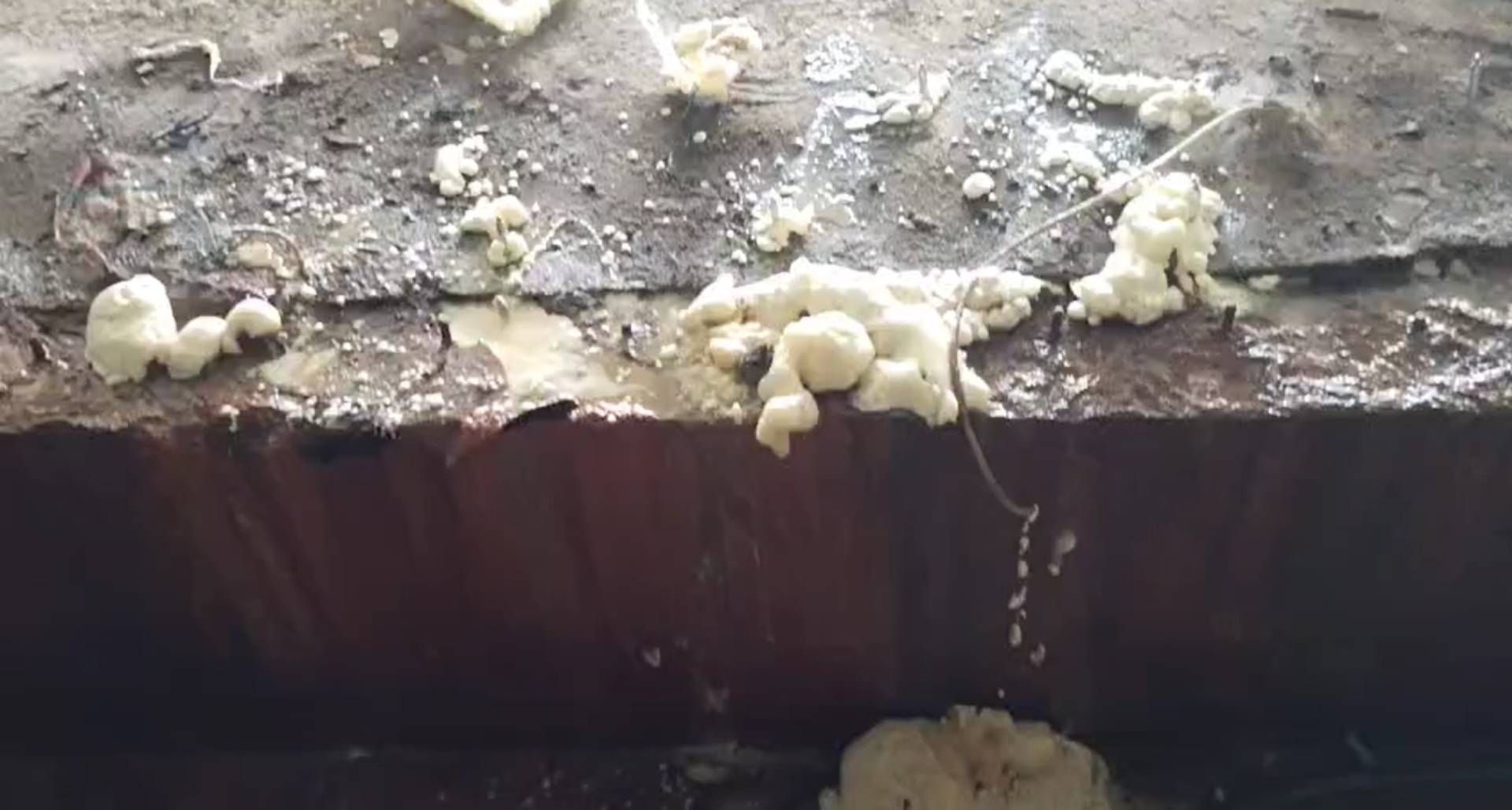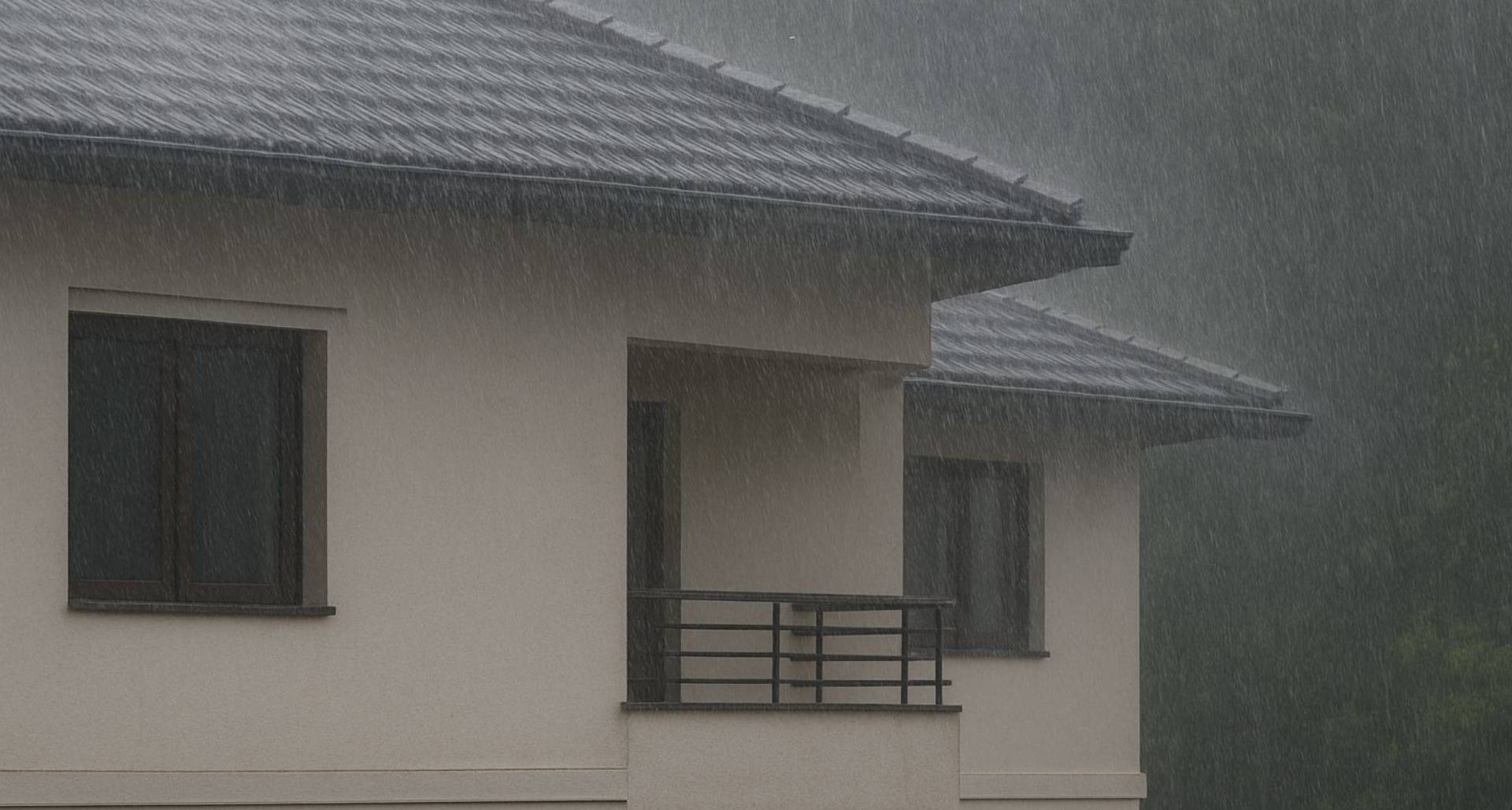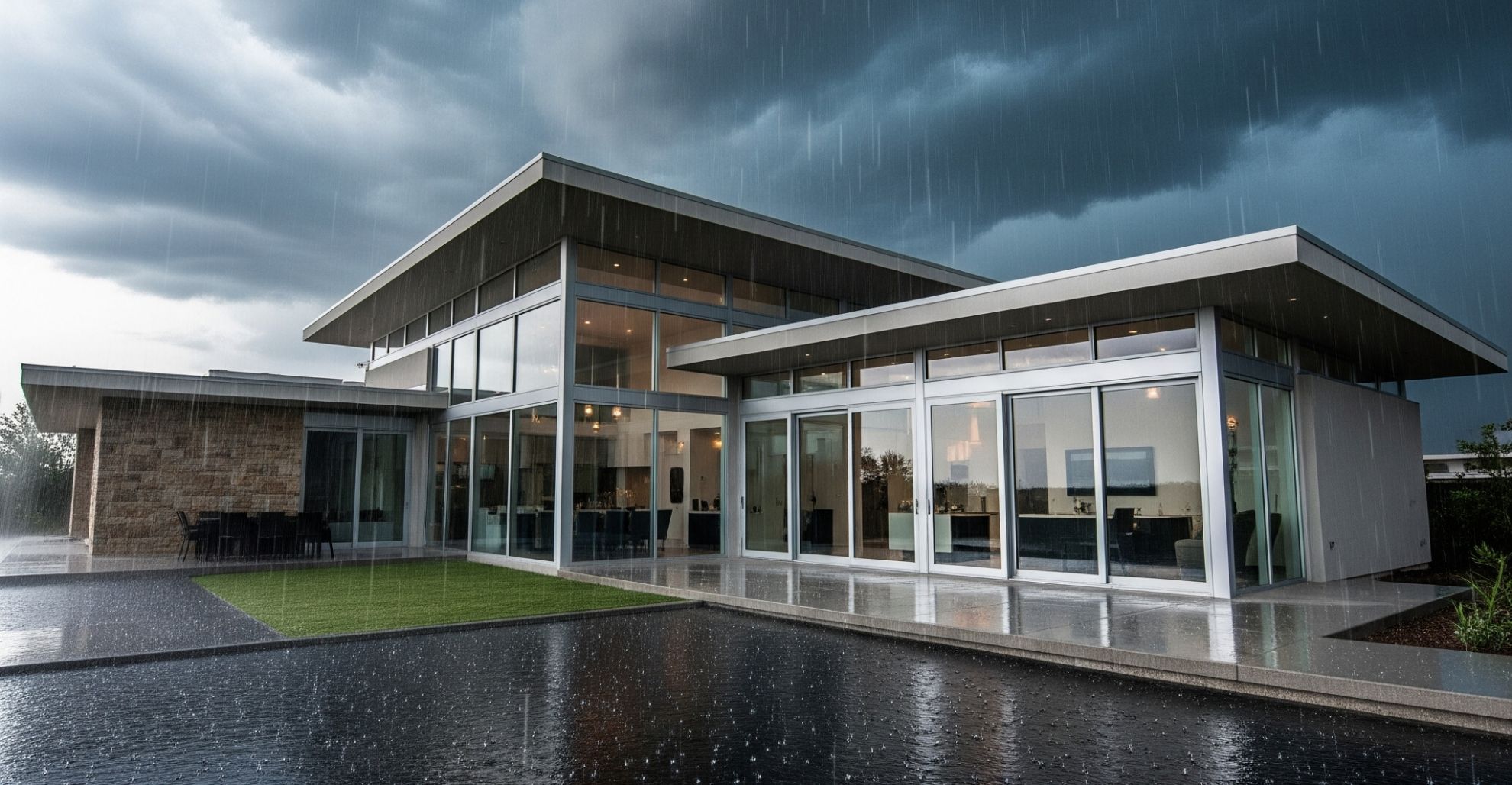Waterproofing Jargons Busted: A Layman’s Guide to Understanding the Basics
by Babu George
Originally published on November 12, 2023, 9:36 pm, updated on November 12, 2025
scroll downWaterproofing, the shield that stands between your home and the relentless forces of water, is often wrapped in a cloak of technical jargon that can make the average homeowner’s head spin. As a homeowner when you receive a quote for waterproofing or talking to a professional, you might find yourself in a maze of terms like membranes, hydrostatic pressure, and efflorescence, wondering, “What on earth does all this mean?”
In this comprehensive guide, as waterproofing consultants, we’ll decode the intricacies of waterproofing jargon, breaking down complex terms into digestible pieces of knowledge. Whether you’re dealing with a persistent leak in the basement, contemplating a new construction project, or simply seeking to understand the intricacies of home maintenance, this guide is your compass in navigating the high seas of waterproofing terminology.
Navigating the Labyrinth: From A to Z
This article we have taken care to cover major terminologies from the basic ABCs to the nuanced symphony of technical acronyms. We’ll explore the significance of each term, unravelling the basic differences between membranes, decoding the language of hydrostatic pressure, and shedding light on the importance of curing in the realm of waterproofing.
But it doesn’t end there. We’ll dive deep into the world of waterproofing chemistries, polymers, decipher the secrets of concrete, and uncover the hidden stories behind efflorescence. Ever wondered about the difference between caulk and sealant? We’ve got you covered. And as we unravel the threads of jargon, we’ll pause to appreciate the significance of each term in the grand tapestry of waterproofing.
1. Waterproofing vs. Water-resistant:
Let’s start with the basics. These terms are often used interchangeably, but they mean different things. Waterproofing means complete protection from water, making a surface impervious to water penetration. On the other hand, water-resistant implies a certain level of resistance but not complete immunity.
Significance: Think of waterproofing as a fortress against water, and water-resistant as a sturdy shield.
2. Damp Proofing:
Damp proofing is a preventive measure to stop moisture from passing through walls and floors. While not as robust as waterproofing, damp proofing is often sufficient to prevent issues like rising damp in basements or crawl spaces. It usually involves the application/coating of a damp-proofing compound or membrane.
Significance: When someone mentions the word damp-proofing, it is important to understand what is the full scope of work and understand if it fits your scheme of things.
3. Membranes:
In waterproofing, a membrane refers to a thin layer of material that acts as a barrier against water penetration. Membranes can be made of various materials, including asphalt, bitumen, rubber, acrylic, PU or polyurea. There are mainly two types of membranes; pre-formed membranes and brushable membranes. Pre-formed membranes come in rolls and needs to be joined to cover a large area and will have seams/joints. Brushable membranes are usually liquids prebatched and packed by manufacturers and are mixed, applied at site to form a seamless membrane. They are commonly used in basements, roofs, toilets, and foundations to create a watertight seal.
Significance: Membranes provide a durable shield, preventing water from infiltrating structures and causing damage.
Also Watch: New Construction Waterproofing Services from UniPro®Waterproofing
4. Efflorescence:
Have you ever noticed white, powdery deposits on your basement walls or floor? That’s efflorescence, a crystalline deposit of salts that forms when water evaporates from concrete or masonry. While not inherently harmful, it indicates moisture issues and should be addressed to prevent future damage. It damages your interior aesthetics and needs to be addressed to.
Significance: Efflorescence signals potential water-related problems and serves as an early warning sign for necessary waterproofing measures.
5. Hydrostatic Pressure:
Hydrostatic Pressure refers to the pressure exerted by standing water. In waterproofing contexts, hydrostatic pressure can lead to structural damage if not properly managed since it penetrates into the structure. It’s crucial to design waterproofing systems that can withstand or redirect this pressure, especially in basements, below-grade structures or water tanks, swimming pools etc.
Significance: Understanding and addressing hydrostatic pressure is essential to decide the right system to be used and prevent structural damage and water intrusion in below-ground spaces and water retaining structures.
6. Curing:
Curing is the process by which a material achieves its final strength and durability. In waterproofing, this often refers to the drying and hardening of sealants, membranes, or other applied substances. Proper air curing of at least 2 to 7 days is essential for ensuring the effectiveness of waterproofing solutions after they are applied.
Significance: Adequate curing ensures that waterproofing materials achieve their intended strength and durability, enhancing the longevity of protective measures.
Also Read: How to Choose the Best Waterproofing Contractor: A Comprehensive Guide
7. Caulk vs. Sealant:
Caulk and sealant are often used interchangeably, but they serve slightly different purposes. Caulk is generally used for sealing joints or gaps in stationary structures, while sealant is more flexible and is used to seal joints where movement might occur. Both are crucial for maintaining a watertight seal in various applications.
Significance: Right selection of caulk and sealants at right places ensures that potential entry points for water are sealed, enhancing the overall effectiveness of waterproofing measures.
8. DPC (Damp Proof Course):
A DPC is a barrier, often a layer of high-grade concrete, used to prevent moisture from rising through walls or floors. It’s a key component in preventing rising damp in buildings.
Significance: DPC acts as a reliable barrier, preventing moisture from rising(Capillary rise) and causing issues such as mold growth or damage to building materials.
9. Leaching:
Leaching is the process by which water seeps through concrete and other permeable materials, leading to a decrease in the material’s strength and durability over time. This can cause problems such as corrosion, erosion, and structural instability. In concrete structures, leaching can occur due to poor design, improper materials, or exposure to harsh environmental conditions. It can be prevented by using appropriate materials and construction methods, as well as regular maintenance and repair. Proper waterproofing measures aim to prevent leaching and the subsequent damage it can cause.
Significance: Preventing leeching is essential to maintain the structural integrity of a building and avoid potential water-related damage.
Also Watch: Laterite Brick Wall Waterproofing
10. SBR (Styrene Butadiene Rubber) Latex:
SBR Latex is a type of synthetic rubber commonly used in waterproofing applications due to its durability and water-resistant properties.
Significance: SBR Latex is UV stable and enhances the water resistance and durability of materials, making it a valuable component in waterproofing solutions.
11. Acrylic Co-polymer:
An acrylic co-polymer is a type of polymer that, when added to materials like sealants or coatings, enhances their flexibility, durability, and water resistance.
Significance: Acrylic co-polymers improve the overall performance of sealants and coatings, ensuring they effectively resist water penetration.
12. PMM (Polymer Modified Mortar):
PMM is a mortar mix that includes polymer additives (either SBR Later or Acrylic Co-Polymer or simply latex for improved mortar strength and flexibility, adhesion, and water resistance. It’s commonly used in waterproofing applications for surface repair, coving/haunching for its enhanced performance. PMM, if cured properly, do not shrink like normal cement mortars.
Significance: PMM offers superior water resistance, thermal expansion capabilities thus reducing hairline cracks and increasing durability, making it an effective choice for mortar in waterproofing projects.
Read the Article: A Step by Step Guide to Prevent Wall Dampness or Fix it
13. M20 Grade, RCC, PCC:
These terms relate to the strength and composition of concrete mixes. M20 grade indicates a specific mix design (1: 1.5: 3, Cement: Sand: Aggregates) which is generally used in residential and commercial constructions, while RCC (Reinforced Concrete laid with steel bars) and PCC (Plain Cement Concrete) describe different types of concreting systems.
Significance: Understanding concrete grades and types is crucial for ensuring that structures have the required strength and durability, especially in waterproofing applications such as PU grouting.
14. CM Plastering (Cement Mortar Plastering):
CM plastering involves applying a layer of cement mortar to walls and surfaces for protection and waterproofing. CM plastering is done is various proportions (1:3, 1:4, 1:5 etc Cement: Sand) based on applications area such as wall cement, plastering, ceiling plastering, external wall plastering etc.
Significance: CM plastering enhances the durability of surfaces such as brick walls which are easily susceptible to water ingress, providing a protective barrier against water infiltration.
15. Cement Screed:
Cement Screed refers to a layer of concrete usually laid at 50mm or above applied over a floor surface to provide a smooth and level surface with slope. It is usually laid as PCC with aggregates added as per the standard mix design. It plays a role in protecting the RCC slab and waterproofing done over it. Given a choice between CM plastering and Cement Screed, you must choose the later as it gives better protection and lower thermal expansion differential between RCC/PCC surfaces.
Significance: Cement Screed provides similar properties of a PCC/RCC such as thermal expansion and contributes to the evenness of surfaces while also providing a protective layer that aids in waterproofing.
16. Negative Vs. Positive Side Waterproofing:
Negative-side waterproofing addresses water infiltration from the side opposite to where water is expected, while positive-side waterproofing deals with the side where water exposure is anticipated.
Significance: In waterproofing, if available it is ideal to do waterproofing on the positive side. Choosing the appropriate waterproofing approach (negative or positive side) is critical for effectively preventing water ingress based on the specific circumstances.
17. DFT vs. WFT (Dry Film Thickness vs. Wet Film Thickness):
DFT refers to the thickness of a coating or material after it has dried, while WFT is the thickness when the material is still wet. Understanding these terms is crucial for ensuring the effectiveness of waterproofing applications. For example, if a coating specifies you apply it at 500 microns WFT (Wet Film Thickness) and the volume solids of the product are 50% then once dry the DFT (Dry Film Thickness) reading will be 250 microns. Some coatings are 100% volume solids which means nothing thickness will be lost between WFT and DFT.
Significance: Properly measuring and understanding film thickness is essential for achieving the desired protective properties in waterproofing coatings and decide its quality.
18. Elastomeric:
Elastomeric materials have elastic properties, meaning they can stretch and return to their original shape. Elastomeric coatings are commonly used in waterproofing to accommodate building movement.
Significance: Elastomeric coatings provide flexibility, allowing them to withstand structural movement without compromising their waterproofing capabilities.
19. Honeycombs and Blow Holes:
Honeycombs are voids or gaps left in concrete during RCC/PCC casting because the slurry leaks through the shutter joints during the concrete pour, while blow holes are cavities in concrete caused by trapped air. Both can compromise the integrity of structures and contribute to water infiltration.
Significance: Identifying honeycombs and blow holes and addressing them using appropriate waterproofing methods is essential to maintain the structural integrity of concrete and prevent potential water-related issues.
Also Read: 5 Alarming Signs That You Should Watch Out For On Your RCC Roof!
20. Penetrative Waterproofing:
Penetrative waterproofing involves applying materials that penetrate the substrate, creating a barrier against water without forming a visible coating. It’s often used for concrete/plastered surfaces.
Significance: Usually, penetrative waterproofing provides an invisible barrier, protecting concrete surfaces without altering their appearance.
21. Tensile Strength and Elongation at Break of Membranes:
Tensile strength measures the ability of a material to withstand stretching or pulling forces, while elongation percentage indicates how much a material can stretch before breaking. These properties are crucial for assessing the durability of waterproofing membranes.
Significance: Understanding the tensile strength and elongation of membranes you are planning to apply for waterproofing helps ensure they can withstand various environmental conditions, contributing to long-lasting waterproofing solutions.
22. Thermal Expansion:
Thermal expansion refers to the tendency of materials to expand or contract in response to changes in temperature or during sun exposure. In waterproofing, understanding thermal expansion is vital, as it cause waterproofing systems to fail if selected wrongly especially for materials exposed to varying temperature conditions.
Significance: Accounting for thermal expansion is crucial to prevent damage and maintain the effectiveness of waterproofing materials, as temperature fluctuations can impact the structural integrity of surfaces beyond the capabilities of the waterproofing system installed.
Watch Video: Leaking Tiled Toilet Floor Waterproofing | UniPro® Waterproofing
23. Coving aka Haunching
Coving, also known as haunching, refers to the application of a thickened layer of waterproofing material around the base of a structure, typically where the vertical surface meets the horizontal surface. This meticulous process involves creating a sloped or rounded transition, akin to a gentle curve, to ensure seamless protection against water ingress.
Significance: Right angles are always a vulnerable point for leaks. The significance of coving becomes apparent in its ability to create a watertight seal at the vulnerable junctions between walls and floors. This area is particularly prone to water infiltration, as rain, melting snow, or ground moisture often converge here. Without coving, water can seep into these joints, leading to potential structural damage, mold growth, and a host of other issues. By applying a cove or haunch, waterproofing professionals effectively divert water away from this critical juncture. The slope created by coving encourages water to flow away from the vulnerable right angle, preventing it from pooling and finding its way into the structure.
Armed with this expanded glossary, you’re better equipped to navigate the world of waterproofing. Whether you’re dealing with a leaky basement, contemplating a new construction project, or simply curious about home maintenance, understanding these terms will empower you to make informed decisions and communicate effectively with waterproofing professionals.
Remember, the key is not just to eliminate the jargon but to demystify the entire process. Waterproofing is about protecting your home from potential damage of water, and with a grasp of these fundamental terms, you’re well on your way to a drier, safer living space.
Do call us if you need to know more. Happy waterproofing!





